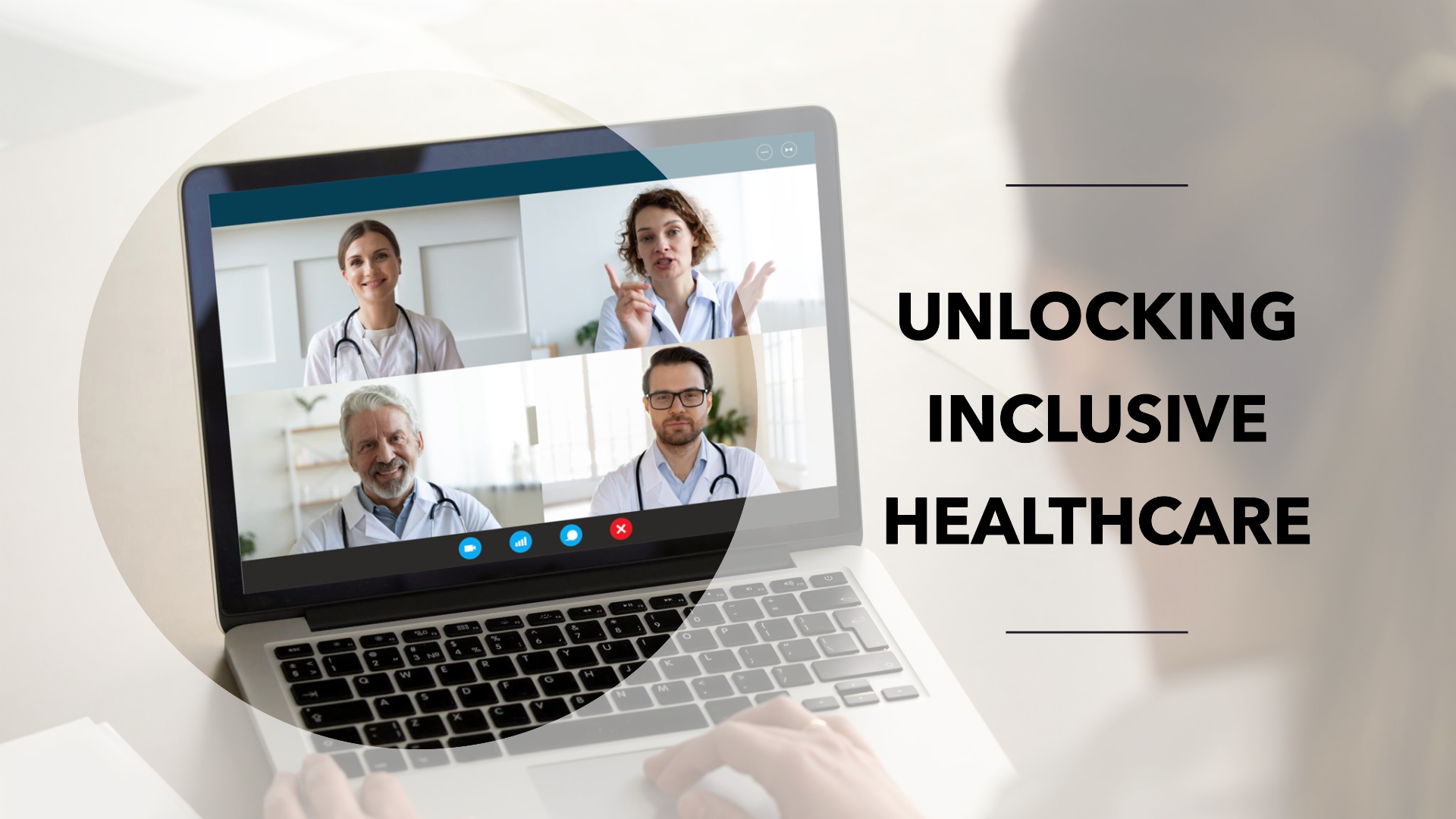Transforming Rural Healthcare: Harnessing the Power of Technology to Overcome Challenges
In rural areas, healthcare access and quality have always presented significant challenges. However, technology has the potential to bridge the gap and alleviate some of the key issues faced by rural healthcare systems. In this article, we will discuss five pressing issues in rural healthcare and explore how technology can provide innovative solutions to overcome these challenges. By leveraging the power of telehealth, digital tools, and data-driven approaches, rural communities can benefit from improved healthcare delivery and better health outcomes.
- Limited Access to Specialists: One major challenge in rural healthcare is the limited access to specialized healthcare professionals. Many rural areas lack local specialists, forcing patients to travel long distances for consultations or treatments. Technology can offer innovative solutions through telehealth platforms. By utilizing video conferencing and remote consultations, patients in rural areas can virtually connect with specialists from anywhere. This approach not only saves time and resources but also allows rural healthcare providers to collaborate with experts, ensuring comprehensive and timely care for patients.
- Healthcare Provider Shortage: Rural areas often face a shortage of healthcare providers due to various factors such as geographical location and limited resources. Technology can help alleviate this issue by enabling telehealth solutions. With remote patient monitoring, wearable devices, and telemedicine platforms, healthcare providers can remotely monitor patients’ health, provide follow-up care, and conduct virtual visits. This approach expands the reach of healthcare providers and optimizes their availability, effectively addressing the healthcare provider shortage in rural areas.
- Inadequate Infrastructure: Rural areas frequently struggle with inadequate infrastructure, including limited healthcare facilities and resources. However, technology can overcome these challenges by making use of mobile health (mHealth) applications. With the increasing accessibility of smartphones and mobile internet, mHealth apps can provide essential healthcare services, such as health education, appointment scheduling, and reminders. These apps empower rural residents to take control of their health while also supporting healthcare providers in delivering care remotely and efficiently.
- Limited Health Information Exchange: Effective communication and exchange of health information are critical for coordinated care and improved patient outcomes. However, rural healthcare systems often lack interoperability and face challenges in sharing patient data across different providers and facilities. Adopting secure digital health record systems and telehealth platforms can facilitate seamless health information exchange. By enabling access to patient information in real-time and securely sharing data between healthcare providers, technology promotes continuity of care and reduces duplication of tests, resulting in better healthcare outcomes for rural residents.
- Health Education and Awareness: Health education and awareness play a crucial role in promoting preventive care and empowering individuals to make informed health decisions. In rural areas, limited access to healthcare information and resources can hinder health literacy. Technology can bridge this gap by providing digital health education platforms and remote health coaching. These platforms can offer personalized health information, self-management resources, and virtual health coaching sessions. By improving health education and awareness, rural communities can proactively take charge of their health, leading to better prevention, early detection, and management of chronic conditions.
Technology has the potential to revolutionize rural healthcare by addressing key challenges faced in these areas. By leveraging telehealth, digital tools, and data-driven approaches, rural communities can overcome limited access to specialists, healthcare provider shortages, inadequate infrastructure, limited health information exchange, and health education gaps.
Embracing technology solutions can empower rural residents to access quality healthcare services, facilitate better communication and coordination among healthcare providers, and ultimately improve health outcomes. Continued investment and innovation in digital healthcare solutions are essential to ensuring equitable access to healthcare for all, regardless of geographic location.
10 Breakthroughs in Telehealth Reshaping Rural Healthcare for the Better
Now we will explore the potential impact of telehealth in rural healthcare and discuss various aspects that can shape its future trajectory.
1. Integration of Artificial Intelligence
One of the key advancements in telehealth is the integration of Artificial Intelligence (AI). AI-driven applications have the potential to analyze vast amounts of patient data, support healthcare providers in diagnosing diseases, predict outbreaks, and personalize treatment plans.
In rural areas, where access to specialists is limited, AI can act as a virtual consultant, aiding local healthcare professionals in making accurate and timely decisions. Machine learning algorithms can also assist in early disease detection by analyzing patterns in patient data, enabling proactive and preventive interventions.
2. Wearable Technology and Remote Monitoring
Wearable devices equipped with sensors offer continuous monitoring of vital signs, activity levels, and specific health parameters. These devices are particularly valuable in rural areas where regular health check-ups are challenging.
Through telehealth platforms, healthcare providers can remotely access and analyze this data, enabling proactive interventions for chronic conditions, reducing hospitalizations, and ensuring patients stay healthy at home. This capability enhances patient engagement, enables timely interventions, and improves overall healthcare outcomes in rural communities.
3. Expansion of Telepharmacy Services
Telepharmacy services bring crucial medication management, consultations, and adherence support to rural residents. Pharmacists can remotely review prescriptions, provide drug information, and conduct medication therapy management. This service is especially vital for patients managing multiple medications, ensuring they understand their treatment plans and prevent potential drug interactions.
The expansion of telepharmacy services in rural areas promotes medication safety, improves patient understanding, and enhances medication adherence rates.
4. Tele-Rehabilitation and Physical Therapy
Tele-rehabilitation platforms have the potential to transform physical therapy for individuals in rural areas recovering from surgeries or managing chronic conditions. These platforms enable physical therapists to remotely guide patients through exercises, monitor progress, and provide necessary support.
By eliminating travel time and facilitating consistent communication, tele-rehabilitation encourages patients to adhere to their rehabilitation routines, resulting in improved outcomes and an enhanced quality of life for rural residents.
5. Expanded Specialized Services
Telehealth has the power to bring specialized services, such as dermatology, cardiology, and oncology, to rural communities. Virtual consultations with specialists enable rural patients to access expert advice without undertaking long and costly journeys.
Additionally, collaborative platforms facilitate multidisciplinary consultations, allowing specialists from various fields to discuss complex cases and ensure comprehensive and holistic patient care. This collaborative approach enhances healthcare access, reduces travel burdens, and improves health outcomes in rural areas.
6. Tele-education and Training
Telehealth is not limited to patient care; it also has the potential to enhance the skills of rural health care professionals. Online training programs and virtual workshops can connect rural health care providers with experts and educators worldwide, ensuring they stay updated with the latest medical advancements and techniques.
This continuous education fosters a culture of learning and innovation within rural health care systems, ultimately improving the quality of care delivered to rural populations.
7. Telehealth in Emergency Response
Telehealth plays a vital role in emergency situations, allowing remote medical professionals to guide first responders and caregivers in providing initial care. Teletriage services assess the severity of emergencies, prioritize cases, and offer real-time advice, ensuring that critical interventions are initiated promptly.
By leveraging telehealth in emergency response, rural communities can enhance emergency care delivery, reduce response times, and potentially save lives.
8. Augmented Reality (AR) and Virtual Reality (VR) in Medical Training
AR and VR technologies have the potential to transform medical training and education in rural areas. Through simulated surgeries, virtual medical conferences, and hands-on training sessions, rural health care providers can enhance their skills and confidence without leaving their communities.
These immersive experiences improve the quality of medical training, promote knowledge sharing, and ultimately lead to improved patient care in rural settings.
9. Digital Health Records and Interoperability
The seamless exchange of patient information between healthcare providers is essential for continuity of care. Advanced digital health record systems, coupled with secure telehealth platforms, ensure that patient data is accessible to authorized professionals regardless of their location.
Interoperability promotes coordinated care, reduces duplication of tests, and enhances the overall efficiency of healthcare services in rural areas.
10. Culturally Tailored Telehealth Programs
Understanding the cultural context is crucial in healthcare delivery. Future telehealth initiatives will focus on tailoring programs to specific cultural norms, languages, and healthcare beliefs prevalent in rural communities.
Culturally sensitive telehealth services ensure that patients feel understood and respected, leading to better communication, adherence to treatment plans, and improved health outcomes in rural areas.
Conclusion
The future of telehealth in rural healthcare holds immense potential to transform rural health systems into sophisticated, efficient, and accessible networks. With continued investments in technology, infrastructure, and healthcare education, rural communities can embrace a future where high-quality medical services are no longer bound by geographic constraints.
The integration of AI, wearable technology, telepharmacy services, tele-rehabilitation, expanded specialized services, tele-education, telehealth in emergency response, AR and VR in medical training, digital health records, interoperability, and culturally tailored programs collectively contribute to a comprehensive telehealth ecosystem that addresses the unique challenges of rural healthcare. By leveraging these advancements, rural areas can overcome barriers to healthcare access, enhance patient outcomes, and bridge the gap between rural and urban healthcare services.
The transformative potential of telehealth in rural healthcare is within reach, offering a bright future where technology plays a pivotal role in delivering equitable and high-quality care to all individuals, regardless of their geographic location.
Thank you for joining us on this journey through the latest in digital health and health wearables news. To stay in the know and explore further, here are some key links for you:
- Digital Salutem Website: Visit Digital Salutem for your weekly dose of digital health news and insights.
- Healthcare Uncomplicated on YouTube: Delve into the topics discussed in this article and more on our YouTube Channel, Healthcare Uncomplicated.
- Digital Salutem Podcast: Tune in to our thought-provoking discussions on the Digital Salutem Podcast. Uncover deeper insights into the world of healthcare transformation on Soundcloud and Spotify
- Share Your Thoughts: We value your feedback! Share your opinions on digital health, patient care, wearables, or anything, comment here or emailing us at info@digitalsalutem.com
- Connect with Us: For inquiries about Digital Healthcare Transformation, Healthcare organizational growth, or Healthcare brand positioning, reach out to us at +44 (0)1273 458590.
Your engagement fuels the ongoing dialogue shaping the future of healthcare. Let’s continue this transformative journey together!





